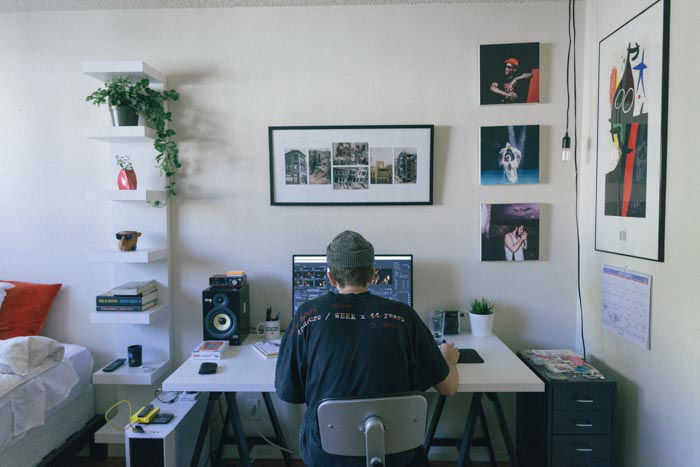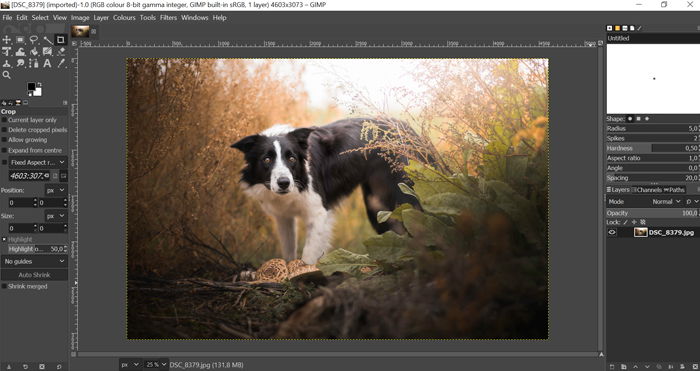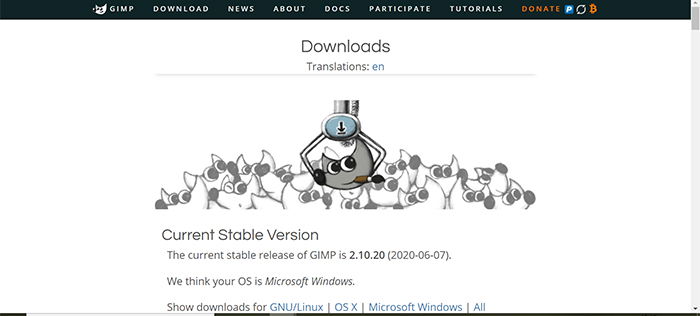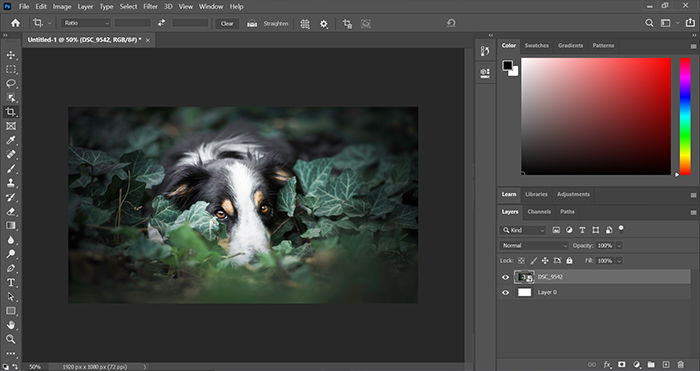Contents
GIMP vs Photoshop (Is GIMP Really Just as Good?)
Photoshop is widely used, but it isn’t for everyone. Especially when comparing hobbyists working on low budgets and professional photographers.
One great Photoshop alternative that stands out is GIMP. But is GIMP as good as Photoshop? Let’s look at the advantages and disadvantages of GIMP vs Photoshop.
This article will help you decide which programme is better for you.

The Advantages of GIMP
Beginners Can Try Out Their Editing Skills for Free
Photoshop, like all Adobe products, used to be very expensive. The only way to use the programme was to buy a one-time licensing fee of $700. Now that Creative Cloud has taken over, you can subscribe to Adobe products for as little as $10 a month.
GIMP is free to use. Although only saving around $10 a month compared to Adobe subscriptions, GIMP gives you a chance to try out editing without commitment. This way, you can decide if you are willing to purchase software like Adobe.
Takes up Less Storage Space
Many photographers are using older laptops and desktop machines to edit images. By no means is this a problem—until you try to download a huge program like Photoshop.
Not only does it take up a lot of space, but it also needs a large buffer space allowing you to edit your images. So if you are conscious about space, then Photoshop may not be for you.
Photoshop currently recommends more than 4 GB of available hard disk space. But GIMP can take up as little as 200 MB. This means that GIMP is faster to download, setup, and doesn’t eat away at precious space on your hard drive and RAM.

User Friendly and Easier to Learn
Photoshop isn’t only for digital photographs. It covers all aspects of designing, illustrating, and many other disciplines. Unfortunately, this means that Photoshop has many tools that you will never use.
This takes up space and makes the learning process much more confusing.
GIMP, on the other hand, is built with digital photography in mind. So you cut to the chase and do away with the unnecessary tools from the mix. As a result, it’s faster and you’re less likely to do something that you have no idea how to fix.
Thus, GIMP is easier to use for non-professionals.
Customisable and Flexible Interface
GIMP not only works on UNIX systems but is also fully customisable. So you are free to move and push away tools and areas you will not require. This is great for keeping only the things you need and speeding up your workflow.
It is flexible enough to suit your needs and allows you to re-create keyboard shortcuts as you see fit.

Modifiable Because it’s Open-Source
GIMP is an open-source program. It means that you can modify features if you know how to change the operating code. It isn’t illegal. On the contrary, it is encouraged and was set-up for this purpose. The tools that are not immediately apparent or available on GIMP are possible through plugins or changing the core code.
Photoshop can batch process images, but it takes a little getting used to. You could set everything up using actions, wait an hour and find out something didn’t set up correctly.
GIMP is superior in batch processing images. It will let you do repeatable actions to large groups of images. This alone is a great reason to choose GIMP over Photoshop.

The Advantages of Photoshop
Offers a Smartphone Version
If you need a mobile or smartphone version, then Photoshop is your answer. With Adobe Photoshop Express, you can edit your images on the move. Unfortunately, GIMP has yet to offer a service like this, and it is doubtful they will do so anytime soon.
Suitable for Various Purposes
GIMP offers some cool features such as the Droste Effect or even turning your images into tiny worlds. It is invaluable for some creative projects. But, there will be times when you want to use your photography for other things.
Photoshop is not built with only digital photography in mind, so it covers many other aspects. For example, food photography may require using Layers to add text or other graphics into the mix. Photoshop allows this, whereas GIMP falls short.
High Compatibility With Other Adobe Programmes
Photoshop plays well with other Adobe programmes. The Adobe CC Suite offers compatibility between all Adobe apps. Because of the cloud system, the synchronisations are automatic.
With the click of a button, you can send your image back and forth between Lightroom and Photoshop. Adobe smartly keeps track of all editing and file resizing across all platforms.
Adobe also offers great cloud storage so that you can access your pictures anywhere.

CMYK Mode for High-Quality Prints
If you need to use other colour modes, Photoshop is your best friend. But GIMP will only process using RGB. There is a way to convert your images to CMYK, but it requires a separate plugin. The RGB colour profile is great for the web, so most of your work will be safe.
When it comes to printing your images, CMYK is necessary. Printers are still based around the Cyan, Yellow, and Key (black) plates that create a colour image. They provide colours on your printer that are closest to what you see on your screen.
Non-destructive Editing When Combined With Lightroom
Destructive editing means that you write over the original. This stops you from reverting if you accidentally save over it. This is one of the best reasons to use Photoshop. Here, the original is saved, and any exports are separate files.
Photoshop can use Lightroom easily as a library, and therefore saves the original in case of accidents. It is also less destructive than GIMP, but you need to follow a few techniques to ensure this.
Offers Constant Development
The team behind Photoshop is always tweaking and upgrading the program. With the Creative Cloud, things are no different. All you need to do is download and install the updates when they become available.
On top of this, Adobe offers great customer service. Photoshop, just like the rest of Adobe, has a huge team dedicated to giving you the best product possible.
GIMP will continue to grow, but the team isn’t nearly as big as Adobe. It also offers upgrades every few months, but never as big or sufficient as the Photoshop updates.

Has More Powerful Tools
Both programs have great tools, helping you edit your images properly and efficiently. But the tools in Photoshop are much more powerful than the GIMP equivalents.
Both programs use Curves, Levels and Masks, but real pixel manipulation is stronger in Photoshop.
For example, GIMP has one Healing Tool, allowing you to remove the odd spot. On the other hand, Photoshop has four separate Healing Tools. Each of these come with an array of controls that lets you determine how they operate.
Handles RAW Images
One of the best things about Photoshop is it can convert RAW images. Camera RAW comes as standard. As soon as you open your RAW file, the RAW editor pops up. You can use RAW images in GIMP but through a separate plug-in. This adds time and confusion to the mix.
Common Feature of GIMP and Photoshop
Both Let You Open, Edit, and Save PSD Files
GIMP allows you to open and edit native Photoshop files (PSD images). This is perfect for photographers who want to revisit Photoshop files in GIMP.
But, you need to first export and save the PSD images onto your desktop and reopen them in GIMP. This is where editing the images and saving them can be a problem. Especially as the editing processes are destructive (not keeping the original file separate).

Conclusion
Photoshop uses stronger tools and offers a much stronger pixel manipulation than GIMP.
GIMP offers a streamlined workflow which is great for beginners. The customisable UI is also ideal for setting up an efficient workflow for online digital photography. It might be more than enough if you aren’t heavily processing your images.
In this article, we collected the biggest advantages of both programmes. We hope that it has helped you with choosing the right programme for you!